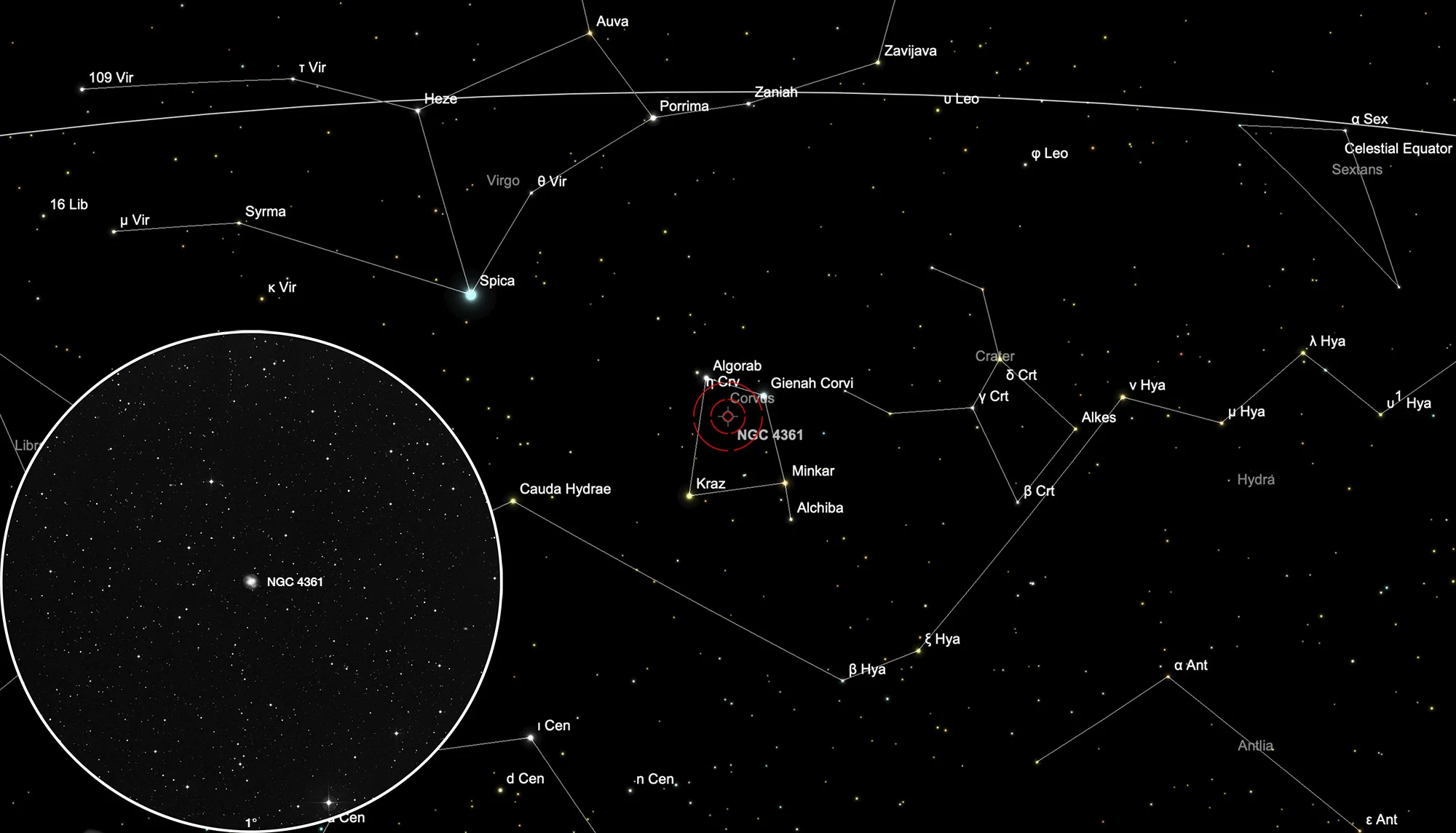Planetary Nebula NGC 4361

History
This planetary nebula was discovered on 7 February 1785 by the famous German-British astronomer William Herschel using his selfmade reflecting telescope of 20 foot focal length (aperture 18.7 inch) in Slough near Windsor in Great Britain. He classified it as cataloged it as I 65 (class I = bright nebulae) and noted: «very bright, pretty large, irregular round, brighter in the middle, like 2 nuclei». [463] His son John cataloged the nebula in 1833 as h 1231 and first thought to be a globular cluster. He noted: «very bright, large, round very suddenly much brighter in the middle to nucleus = * 11m 90" diameter. Resolvable with power 320, and is no doubt a globular cluster; fades away to nothing.» [466] Lord Rosse observed it on 10 April 1852 and could not resolve it. [486] In his 1864 appeared «General Catalogue» John Herschel listed it as GC 2917 and still listed it as «resolvable» [467] On April 23 1868 John Herschel observed the object with a spectroscope and recognized it as nebula. He noted: «Seen at once; bright; all three lines easily seen, and a fourth suspected, at intervals 1; 3; 10 ? from the first by estimation.» [528] Dreyer added it in 1888 as NGC 4361, still describing it as «resolvable». [313]
As one can see from the Spitzer Space Telescope image (Fig. 1) there are many little foreground or background stars superimposed on the planetary nebulas disk. This probably lead to the early confusion with a globular cluster.
Physical Properties
The planetary nebula NGC 4361 was classified as a multiple-shell PN having irregular structures in the surrounding shell. The nearly spherical shell is relatively fainter than the inner regions of the nebula. A large majority of the line profiles show centroidal asymmetry that flips over two distinct axes. The presence of the two symmetry axes is interpreted as evidence for quadrupolar flows that can be produced by a precessing equatorial disk. [529] Central star is a Wolf-Rayet star of spectral class WC. Estimated distances range from 887 pc to 1035 pc [145] The evolutionary age of this PN is estimated to just circa 8000 years. [159]
| Designations | PN G294.1+43.6: NGC 4361, PK 294+43.1, ARO 26, ESO 573-19, VV 62, VV' 110 |
| Right Ascension (J2000.0) | 12h 24m 31s |
| Declination (J2000.0) | -18° 47' 09" |
| Dimensions | 63." (optical) |
| Distance | 1.2 kpc |
| Radial Velocity | +9.0 ± 2.0 km/s |
| Expansion Velocity | 32.0 (O-III) km/s |
| C-Star Designations | AG82 145, BD -17 3614, GCRV 7449, HD 107969 |
| C-Star Magnitude | U: 11.53, B: 12.85, V: 13.21 |
| C-Star Spectral Type | O(H) |
| Discoverer | HERSCHEL 1868 |
Finder Chart
The planetary nebula NGC 4361 is located in the constellation Corvus. The best time for observation is in the months December to September.
